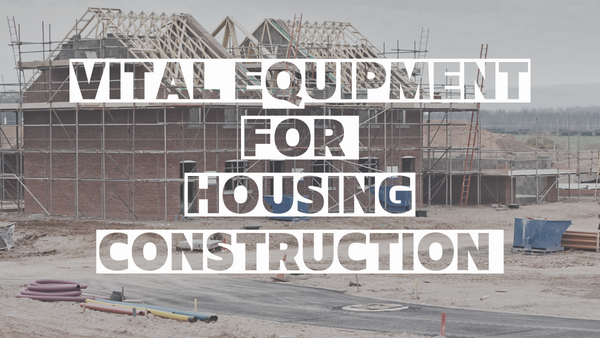Vital Equipment for Housing Construction
Housing construction these days is near enough impossible without the assistance of the equipment to do so. More so, with the ever-growing demand for new homes back by the UK government, we want to ensure that choose our equipment wisely. Hence why we have put together this in-depth resource to help you along the way. “Vital equipment for housing construction” will help you discover the most common and efficient equipment out there to hire on the market. Allowing you to plan every small detail before starting your next big project.
So where do we start? Well, before we look at the equipment that is required, it is best to understand all the different steps to building a house.
Steps to building a house

Housing construction is one of the largest investments that is currently going on across the UK. The UK government is keen to reach its 300,000 homes per year target by the mid-2020’s, which is not too far away. Building new homes is a popular trade undertaken by civil engineers and construction companies. The process takes a huge amount of planning for the construction to be profitable one.
There are several steps to building a house, which we will highlight below:
Site preparation
Providing you have got all the permissions that you need to get started, then the first stage of housing construction is the initial site preparation. Site preparation includes many tasks such as clearing the area, ensuring the site is secure and safe from unauthorised access, site amenities are installed for staff, surveyor to mark out the building clearly.
Laying foundations
Next up is the excavation of the foundations of the building itself. This will require adding any reinforcing bars mesh or cages into the ground beforehand, laying ducts and waste pipes, inserting membranes for damp proofing and pouring footings. It is important to pour your footing last when everything has been conducted beforehand. This is then followed by building or blocking up to the damp course.
Building the house superstructure
Following the foundations, is building up of the housing superstructure. The superstructure entails digging service trenches, installing drainage and service and vent pipes throughout the site and infilling the floor. It is at this point you should arrange a quality inspection as you build the structure.
Throughout the structure construction phases, you will need to install brick and block work, install first-floor flooring, and build up the wall plate. This will require the use of scaffolding on multiple different levels.
Building the roof
The last part of the structural phase is to install the roof and or any dormers that are included in the planning. Ensure that when constructing the roof that any water tanks are fitted in the attic or roof space.
Interior and exterior fittings
During this point in the build, all your walls and roof should now be completed and moving on to the interior and exterior fittings. This includes windows, guttering, downpipes, external rendering, fitting plasterboard noggins and box-in vent pipes. All this preparation now leads to the next phases of construction where the housing starts to come alive.
First fix
First fix entails fitting all electrical and plumbing is fitted within the building. This will include all gas pipes, underfloor heating to be fitted and filled, insulation fitted to external walls, and electrical wiring to be manoeuvred to its desired location. First fix also involves the plastering and skimming of internal walls once the wiring is implemented.
Drainage at external works
During this stage, the drains and their falls are constructed and inspected by a building inspector. These will need to be attached to the mains, or into a septic tank ready to use. If you are connecting to the mains sewer in a road, it will need to be conducted by an approved contractor. Additionally, in this stage, all trenches should be filled, and driveways can be constructed.
Second fix
Second fix phase involves the fitting on the staircase and all carpentry work. This could be fitting of the staircase, skirting and architrave on top of the plasterboard you have laid from the first fox stage. Second fix also requires the boiler to be fitted, radiators, sinks and units, hobs, showers, toilets and more.
Decorating
Coming to the latter stages of the project, the decorating stage is one that we are all familiar with. This will involve the decoration of the entire house. Installation of kitchens, painting walls, interior tilting and carpets to be laid.
Landscaping
As with most housing construction, there will be some required landscaping required to meet building regulations. Therefore, once the interior of the house is complete, you can move on to decorating the outside.
Sign off
The final stage of housing construction is the sign-off stage. The house is fully cleared out and is ready to be lived in. All on-site amenities are removed and security facing is removed. All utilities and local councils are to be contacted to organise council tax valuation and energy performance certificates.
Housing and construction laws in the UK

There are multiple different laws and regulations that you must adhere to when it comes to housing construction in the UK. The biggest hurdle of construction is consent for planning permission and building regulations. It is important to understand the difference between the two, as you will need to approach different parties to obtain them.
Planning permission
Planning permission works closely with the local community and seeks guides of the development of towns, cities, and the countryside. It also involves the appearance of buildings, landscaping requirements, and highway access and development.
Building regulations
Unlike planning permission, building regulations determine the standard of construction to protect the health and safety of people ultimately living in them. Building regulations will include insulation, fuel and power conservation from the building process, and installing facilities appropriate for the customers purchasing the property. Building regulations will include carbon offsetting and procedures construction companies will have to navigate to meet regulations.
Overall, for most types of construction work, separate permission under both regimes (separate processes) will be required. For other building work, such as internal alterations, building regulations approval will probably be needed, but planning permission may not be. If you are in any doubt, you should contact your local planning authority or a building control body.
Safety equipment for housing construction
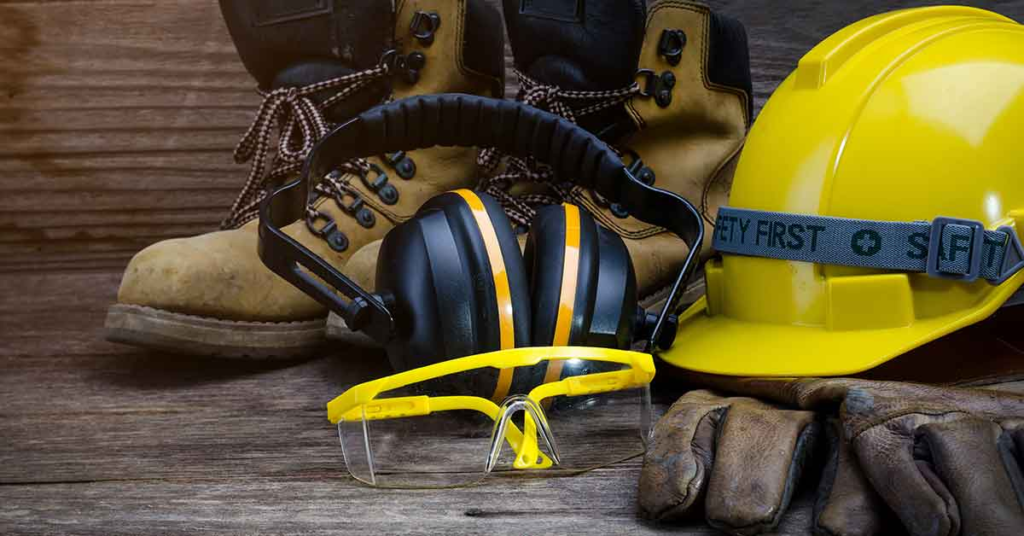
Personal protective equipment (PPE) is an essential part of every single construction project. But just before we jump onto the exciting part of the machinery, we need to make sure we protect ourselves and our staff.
Let’s have a look at the top five essential pieces of safety equipment you should be wearing on a building site.
Head protection
No matter your role on a building site, it is important that you always wear a hard hat to protect yourself. Not only from falling objects, but hard hats or helmets, deflect the sun’s heat, providing protection from dehydration and sunstroke. Hard hats come with several attachments that are suitable to the task at hand. For example, some offer a face shield, ear protection, or additional ventilation. It is important to wear the appropriate headwear to suit rolls on a housing construction site.
Hi-Viz Jackets
Housing construction sites are extremely busy, especially if you have multiple gangs working within the same area at the same time. Therefore, it is essential to always wear a Hi-Viz jacket or vest. With large machinery constantly moving around, it is important that you are always visible to everyone else on the building site. These jackets also help during low levels of light as they off reflecting strips on them for the use in early nights of winter.
Hand protection
Every single construction worker must use their hands to complete any type of task on a housing construction site. Therefore, it is essential to protect these very important assets of the human body. The investment into the correct glove will protect from cuts, burns or wounds of any kind. These are extremely important to adopt, especially when working with chemicals and harmful substances.
Eye protection
Possibly the most exposed parts of our whole body on a housing construction site are our face and eyes. Both of these are extremely sensitive areas of the body, therefore, should be always protected.
Footwear
Did you know that it is a legal requirement to provide the staff of a housing construction site with the appropriate footwear? According to HSE, slips and trips make up for 24% of all minor accidents that occur on a building site. The type of footwear will depend on the type of building site you are working on, or what role a various member of staff is taking. It is essential that the footwear provide an ample amount of protection.
Popular equipment for housing construction
It is important to ensure that when undertaking large construction projects like housing, you have the right equipment to go ahead. Here we want to share with you the most popular hired equipment for housing construction.
Excavators
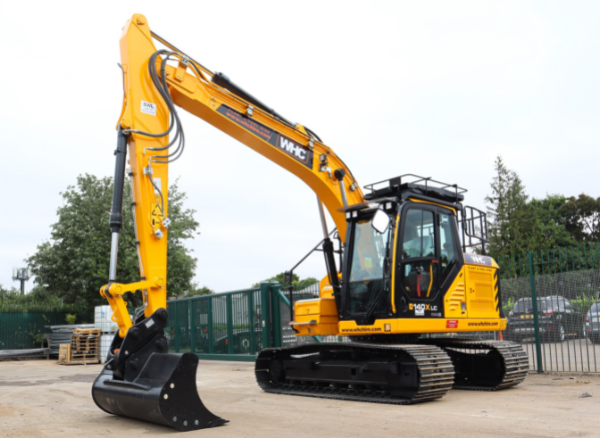
One thing is for sure when it comes to any type of construction, there is sure going to be plenty of excavation to do. Hiring an excavator is a fast and effective way to complete a huge amount of earth moving and removal. With so many styles and specifications on the market, it should be easy enough to find the right size machine for the job. You should expect to pay around £75.00 +VAT per day upwards for excavator hire.
Articulated dumpers
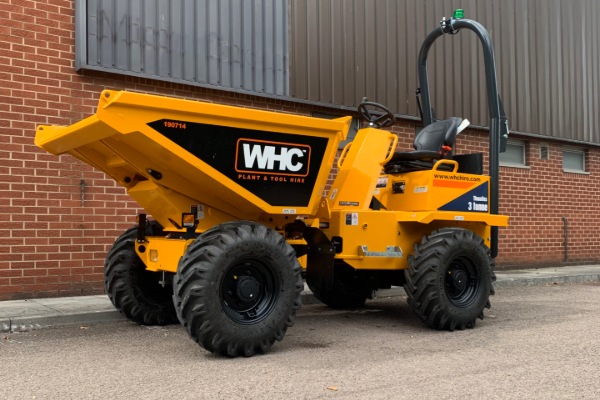
Articulated dumpers are perfect partners for excavator hire. After all, how are you going to move all the earth? One bucket at a time? Articulated dumpers provide the answer to moving large bulk loads of earth at one time. Their unique construction allows them to traverse across the roughest of terrains, resulting in quicker completion. Again, like excavators, articulated dumpers come with a range of specifications and load capacities. You should expect to pay from around £75.00 + VAT per day upwards for an articulated dumper.
Telehandlers

Since their first introduction onto the housing construction scene, telehandlers have grown in popularity throughout the industry. Originally used in agriculture, the telehandler is best known for its use in and around busy farms for day-to-day activities. However, when introduced to the housing construction industry, the telehandler was taken to another level. These highly versatile machines are somewhat of a Swiss army knife-style piece of equipment. There is always an attachment for them to boost your productivity, hence why they are seen on building sites all over the country. Telehandlers are available in a range of different sizes, depending on the requirements of your project. Their hire rate starts from £140.00 + VAT per day upwards, depending on their specs.
Tower Lighting
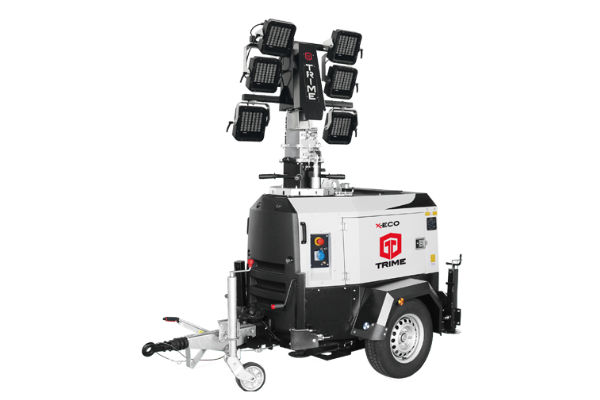
One of the most important aspects of protecting staff of a housing construction site is to enable them to see when light is fading. Especially in the winter months. Tower lighting offers is an ideal solution to issues with visibility. These portable machines can be strategically placed in and around a construction site to provide adequate lighting for staff. Once on site, their position can be altered at any point. Tower lighting hire rates start from around £90.00 + VAT per day for a 9m LED unit.
Generators
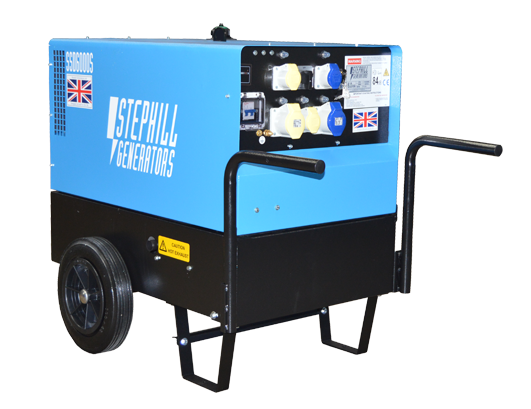
A solution to accessing electrical power in the middle of nowhere is a generator. Which, considering the consequences a new housing construction site is under, there is no surprise that these machines are a popular hire. Generators offer electrical power in the most remote of places. Therefore, allowing you to power equipment, heat rest areas and keep a whole site moving. Generators are available to hire in many different sizes depending on the output required. However, you can expect to pay £60.00 +VAT per day for a 6.0KVA generator.
Cement mixers
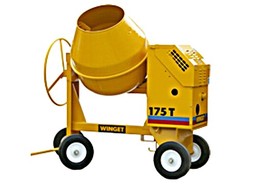
If you have got a huge number of bricks, blocks and footings to lay, then one machine that should be on the cards is a cement mixer. These machines allow you to combine your material together to create mixes such as mortar, concrete, and more. Without one of these machines, it’s highly likely that the quality of your final product would not be as good. The great thing about cement mixers is that they are extremely cost-effective machines to hire. With a choice of power options, cement mixers can be tailored to the amenities that are present on-site. You should expect to pay as little as £13.00 + VAT per day for a standard ½ bag cement mixer.
Compacting equipment
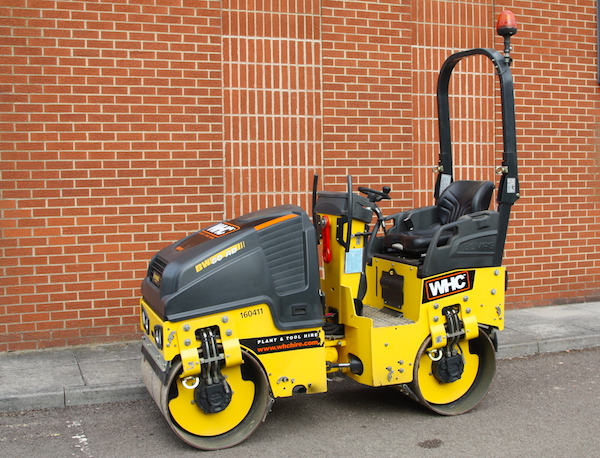
If you are about to undergo a new housing construction project, one thing is for sure you are going to need some compacting equipment. Rollers and Wacker Plates are one of the most popular hires for sub base preparation of earth and stone. Wacker plates are used in the latter stages of housing construction to create driveways, patios, and smaller-scale areas. Whereas rollers are used for compaction of an entire building site, roads or building up layers of land or rock. Compacting equipment can vary in price depending on the size and technology of the machine. However, expect to pay as little as £22.50+VAT per day for a small wacker plate and up to £87.50+VAT per day for Twin drum vibrating rollers.
Scaffold towers
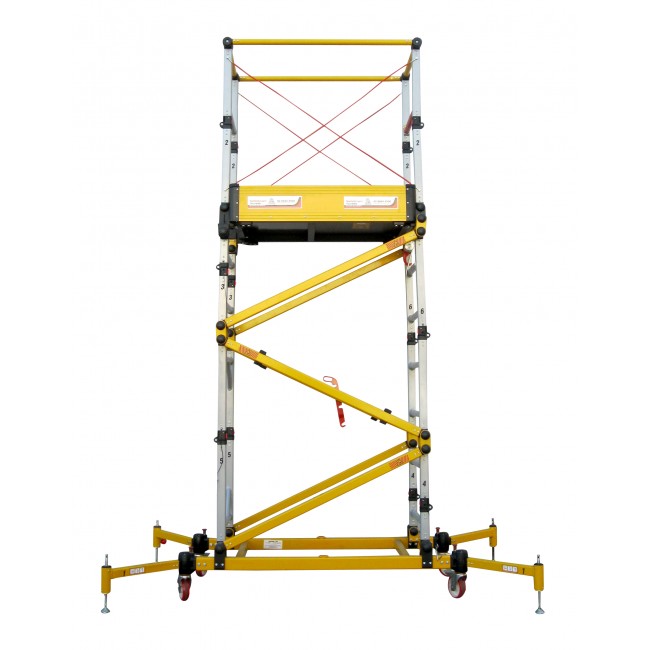
The last of the most popular hires for housing construction is scaffold towers. These temporary portable structures can be erected with simple ease and disassembled in a matter of minutes. With a huge range of heights available to hire, you are sure to find the right access for the stage of production you are on. Commonly scaffolding is used for constructing walls and installing roofing, staying up until the entire structure is complete. Prices for a scaffold tower will start from around £20.00+VAT per day or £40.00 per week.
How to get long-term hire quotes for equipment for housing construction
Two factors determine the cost of hiring equipment for housing construction. The value of the equipment and the period of hire. The longer you hire equipment for, generally the cheaper it is per day. For example, an excavator that costs £75.00+VAT per day should cost around £210.00+VAT per week. The same principle applies to smaller equipment. Take, for example, a wacker plate. Wacker plates cost around 22.50+VAT per day, but only cost £45.00+VAT per week.
It is important to keep this in mind when hiring any type of equipment. However, as you may discover during the process of construction, things can take more than just a couple of weeks. If this is the case, you may want to seek long-term hire rates. Long-term hire rates can only be organised by contacting your equipment supplier. Long-term rates are normally offered for periods of hire longer than 4 weeks. These are exclusive rates that won’t be advertised; therefore, you should apply in writing for them. This could save you a huge amount overall on your plant and tool hire during your build.
Where to get long term hire rate quotes for housing construction equipment
With over 20 years of experience in supplying high-quality equipment, WHC Hire Services specialises in supplying the right kit to get the job done. No matter how large or small your housing construction project is, our extensive fleet of low-hours, highly efficient and productive equipment can help you meet your deadlines and save you money on running costs. With depots across Worcestershire, Gloucestershire and the Cotswolds, our team is ready to help you get the job done. Call now to discuss your long- or short-term build project and let us help you get the equipment you need. 01684377977 or click here to see our full catalogue of equipment.

